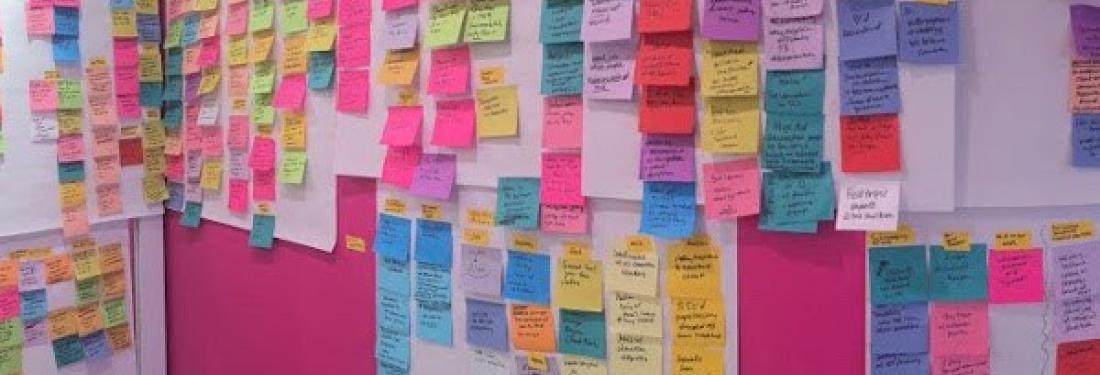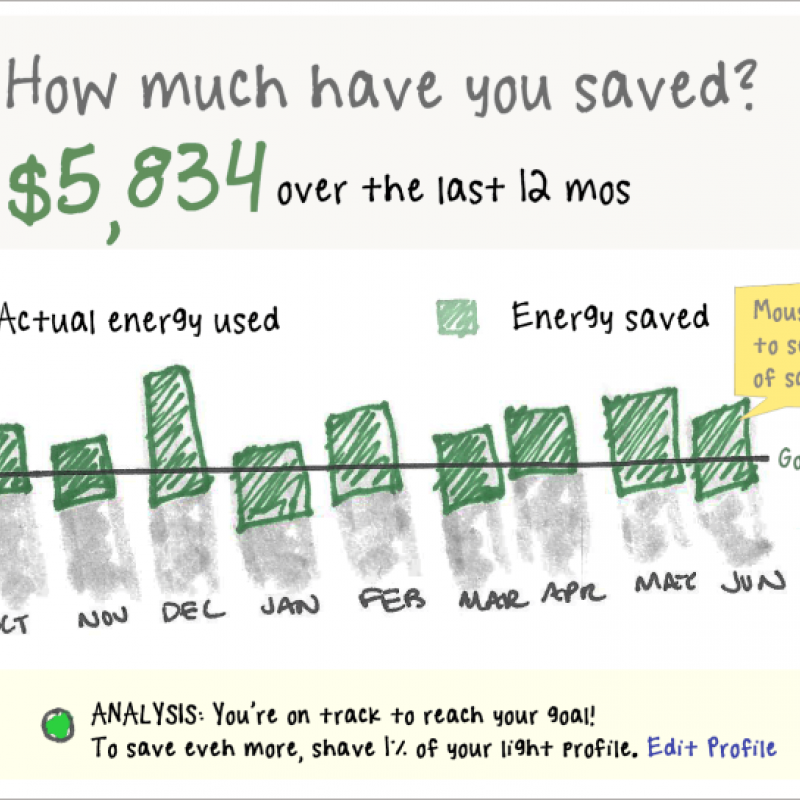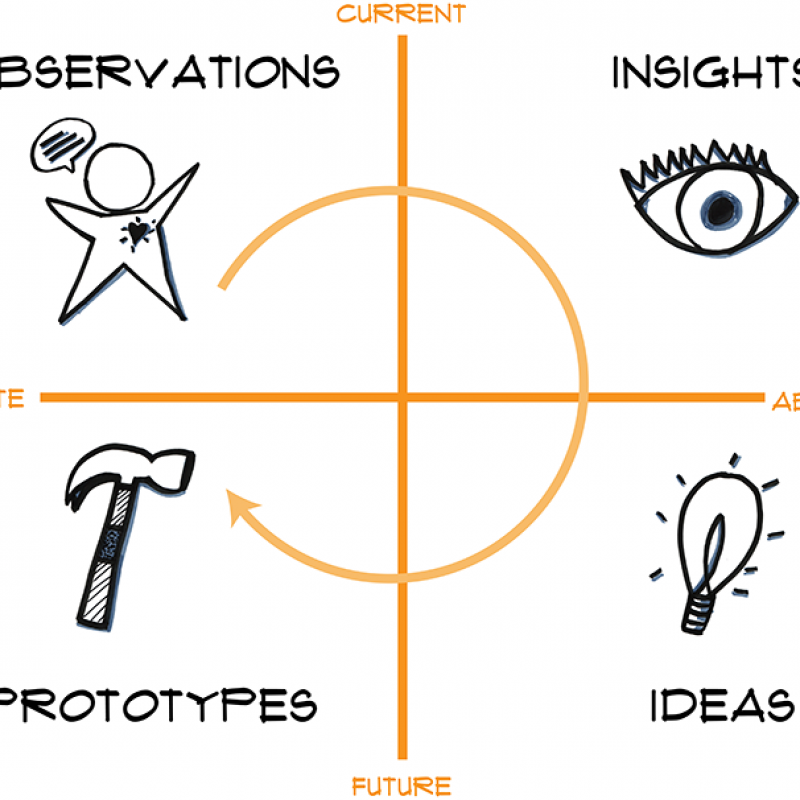Part 1 of this series dealt with overall questions that people ask me about design thinking. This second part deals with questions I hear about specific parts of the process after someone has tried it on their own. If you’re not sure what design thinking is, go back to Part 1. If you’ve learned about it, tried it, and are ready to get into specifics, read on.
1. How many people should I interview for the initial user research?
Start with 4-6. Move up from there. Interview more people if you have different kinds of target users, like new moms and empty nesters. You’ll find that as you get towards 10-12, the interviews become redundant, and you should split your research into two studies — an initial and a follow-on to answer new questions. A common mistake is interviewing too many which leads to unwieldy amounts of data. Start small.
2. I showed someone a demo of my stuff and they commented on it. Is that user research?
No, this is showing someone a demo of your work. User research involves less of you showing and more of you watching people actually using your stuff and asking questions.
3. I’m not a storyteller, but I hear that storytelling is important for design thinking. Why?
If you have ever told a friend a story about your day, you are a storyteller. Storytelling is a key to the empathy building that design thinking demands. People are hardwired to think in terms of stories, and only by hearing specific stories about problems, not generalizations, are we empowered to solve them. When conducting and sharing research, focus on the stories, not the generalizations of what is going on. Think about how to solve the specific problems and address the specific emotions that are emblematic in the stories. If you think about how to solve the problem in general, the solution you come up with will be as general and uninspired as the problem statement.
4. What’s next after I do some observations?
If you have done a strong job with your initial observations, by conducting solid needfinding interviews and unpacking insights, the next steps, ideation and prototyping, will flow easily from there. If you have not done a strong job, your path will seem fuzzy. You’ll need to do more research or reach out for help analyzing your research. Users will not give you the answer directly — your analysis will. Check out techniques like affinity diagrams and journey maps as tools for unpacking data to help you get the most out of your research.
5. What’s an insight, from a design thinking perspective?
An insight is a new perspective about the problem you are solving that is not something you could have come up with sitting in your room, thinking about the problem really hard. For example, if I am working on a problem related to health, an insight would not be: people would like to talk their doctor about small medical issues from home instead of coming in, because it’s too time consuming. This is obvious. Instead, an insight about doctors and patients would be some new story or statement about what is really happening for them that makes you think,“hmmm…I hadn’t thought about it that way before.” An insight is something you can preface with: “I was amazed to discover that….” It can be very small, but it can’t be super obvious. For example, a good small insight you might have uncovered after interviewing doctors is: “I was amazed to discover that doctors spend more time on remote video appointments with patients than on in-person appointments at the clinic because it takes so long to get the technology working for each phone call.”
6. How do I know if I have a good “how might we” question for my brainstorm?
“How might we” (HMW) questions are a big stumbling block for new design thinkers because they must have the right level of granularity — not so broad that they are unsolvable and not so narrow that they describe the solution. The best “how might we” questions include your insight as part of the statement — so if your insight is weak, so is your HMW. A good way to check if your HMW question is good is if it has at least three elements from the “Who, What, When, Where, Why” set. For example:
Too broad: “How might we help people find health related information?” (Who are the people? Why are they looking for it? When are they looking for it?)
Too narrow:“How might we help people with diabetes find online information about diabetes classes?” (describes the solution in the question)
About right: “How might we help people newly diagnosed with diabetes feel supported as they have to make unfamiliar lifestyle changes?” (clear who, when, and what)
7. When I do brainstorms with my group, they always judge the ideas. What do I do?
Brainstorms often fail because you have to set aside the norms that we usually have when sharing ideas and follow a new set of rules to free your thinking. That’s hard to do when someone in the room, like your manager, the in-house skeptic, or the CEO, is either making faces at bad ideas or sitting across the room with their arms crossed. A few ideas for combatting these brainstorm killers:
- Start with a review of the rules for the brainstorm even if everyone knows them. We do this every time. Read them out loud and post them up.
- Bring in a new person who is not a part of your team to moderate. Have them enforce the rules. This can be someone outside of your organization, or inside but not a part of your team.
- Go someplace new. New places means new behaviors.
- Start with writing down ideas independently on pieces of paper and then make sure that everyone shares the ideas with only positive comments after each shared idea.
8. I’m stuck. How do I know this process is gonna work?
As you are going through the process, there always comes a time that you become convinced that the problem is too hard or unsolvable or the process is not deterministic enough to hint at the solution early on. My students often get stuck because they don’t know where things are heading. Design Thinking forces you to deal with ambiguity. Suspend your disbelief and continue to follow the process … you will get to the results.
9. How do I get better at design thinking?
Practice, practice, practice. Seek out coaching. Invite talented design thinkers to help you unpack your user research, brainstorm solutions, and help you figure out ways to test the efficacy of your ideas. Design thinking is about collaboration. Go collaborate. Ask experienced design thinkers to review your plans and give you feedback. Knowing the rules is just the beginning. You must get coached and practice to become awesome.
10. How do I get others to buy into following this process?
First of all, start with just trying out the design thinking mindset. You can continue following your current processes, but try out parts of the mindset. For example, ask your team in a meeting to avoid judging any idea. If they don’t like an idea, ask them to build on it instead. Or, invite someone new to a meeting who isn’t usually on your team to try out radical collaboration. Or, when someone comes up with an idea, ask them to draw it or prototype it in some way. Just try out parts of the mindset and see what happens. Then, try the process on something small. Use it to solve a small problem at work like not enough seating at lunch and amaze others by the success. Get others to learn by involving them in the doing. Baby steps.
Or, hire someone like Sliced Bread to show you the process and inspire others to buy in.







